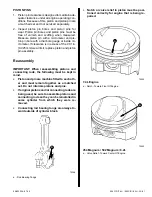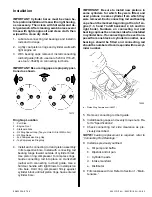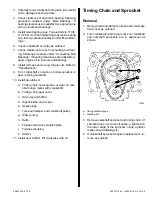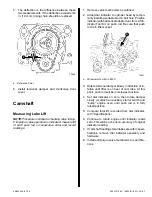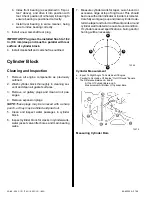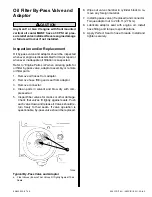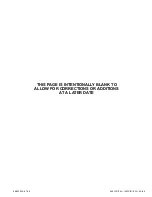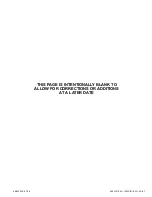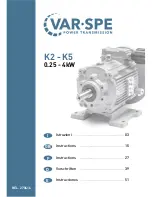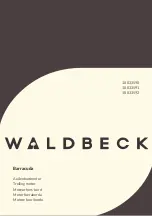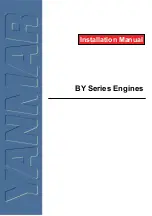
90-823224--2 796
454 CID (7.4L) / 502 CID (8.2L) - 3A-61
72569
Measuring Cylinder Bore
8. Check cylinder head gasket surfaces for war-
page with a machinist’s straight-edge and a feel-
er gauge, as shown. Take measurements diago-
nally across surfaces (both ways) and straight
down center. If surfaces are warped more than
.003 in. (0.07 mm) in a 6 in. area or .007 in. (0.2
mm) overall, block must be resurfaced by an au-
tomotive machine shop.
72566
b
a
a - Machinist’s Straight Edge
b - Feeler Gauge
CYLINDER CONDITIONING
1. Performance of the following operation depends
upon engine condition at time of repair.
2. If cylinder block inspection indicates that block is
suitable for continued use (except for
out-of-round or tapered cylinders), they can be
conditioned by honing or boring.
3. If cylinders have less than .005 in. (0.127 mm) ta-
per or wear, they can be conditioned with a hone
and fitted with high limit standard size piston. A
cylinder bore of more than .005 in. wear or taper
may not clean up entirely when fitted to a high lim-
it piston. To entirely clean up the bore, it will be
necessary to bore for an oversize piston. If more
than .005 in. taper or wear, bore and hone to
smallest oversize that will permit complete resur-
facing of all cylinders.
4. When pistons are being fitted and honing is not
necessary, cylinder bores may be cleaned with a
hot water and detergent wash. After cleaning,
swab cylinder bores several times with light en-
gine oil and a clean cloth, then wipe with a clean
dry cloth.
CYLINDER BORING
1. Before using any type boring bar, file off top of cyl-
inder block to remove dirt or burrs. This is very im-
portant to prevent boring bar tilt, with result that
bored cylinder wall is not at right angles to crank-
shaft.
2. Measure piston to be fitted with a micrometer,
measuring at center of piston skirt and at right
angles to piston pin. Bore cylinder to same diam-
eter as piston and hone to give specified clear-
ance.
NOTE:Hone cylinders as outlined under “Cylinder
Honing” and “Piston Selection,” following.
3. Carefully observe instructions furnished by man-
ufacturer of equipment being used.
CYLINDER HONING
1. Follow hone manufacturer’s recommendations
for use of hone and cleaning and lubrication dur-
ing honing.
2. Occasionally, during the honing operation, thor-
oughly clean cylinder bore and check piston for
correct fit in cylinder.
3. When finish-honing a cylinder bore to fit a piston,
move hone up and down at a sufficient speed to
obtain very fine uniform surface finish marks in a
crosshatch pattern of approximately 30 degrees
to cylinder bore. Finish marks should be clean but
not sharp, free from imbedded particles and torn
or folded metal.
4. Permanently mark piston (for cylinder to which it
has been fitted) and proceed to hone cylinders
and fit remaining pistons.





